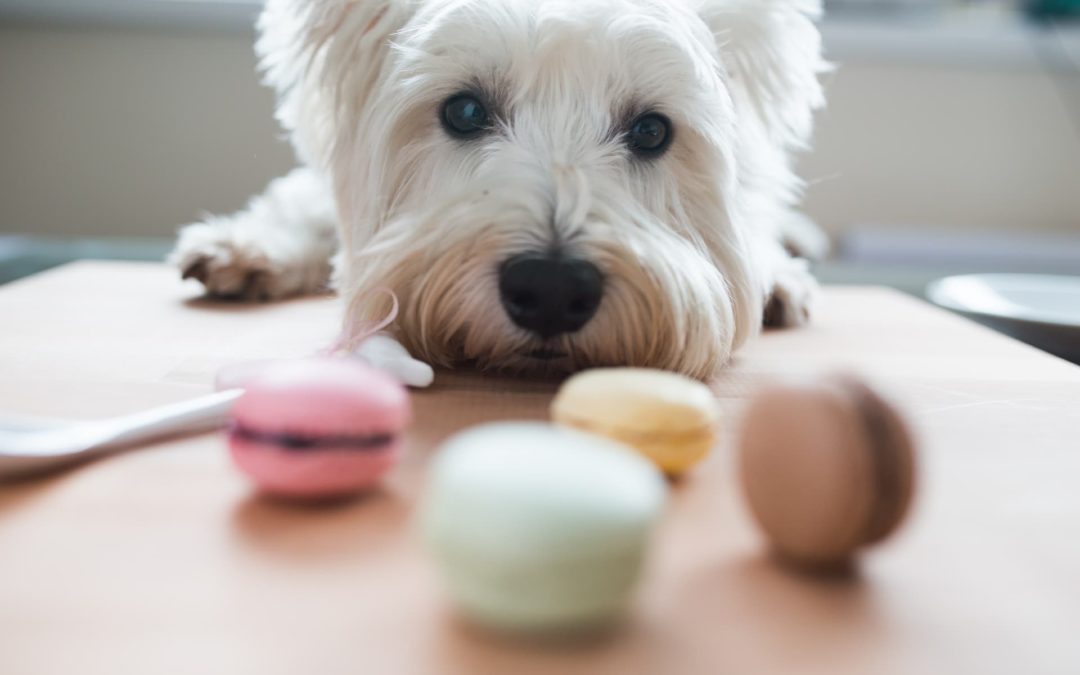One of the most common phone calls we receive as a veterinary clinic is questions about dogs and cats eating things outside of their typical diet. While this is natural behavior in our curious pets, sometimes those things can be dangerous and need medical attention. If you know your pet has ingested something that could be potentially harmful, the most important thing is to act fast! A common course of action we take is to induce vomiting and if several hours go by, it can be too late to do this. Below, we will discuss some of the most common household toxins we see ingested by dogs and cats.
1. Chocolate
Especially around holidays, we get many calls about dogs ingesting chocolate. While chocolate is toxic to cats as well, they seem to not like it and cases of ingestion are rare. Generally, the smaller the dog and the higher percentage of cocoa in the chocolate, the higher the risk of toxicity. The caffeine and theobromine in chocolate act as stimulants, and can cause gastrointestinal upset, changes in heart rate and rhythm, and rarely neurologic signs such as seizures. If we know a dog has eaten a concerning amount of chocolate, treatments such as inducing vomiting may be helpful in preventing further complications.
2. Grapes, Raisins, and Currants
Grapes and associated products are known to be toxic to dogs, but we do not fully understand how and why this toxicity occurs. Toxic doses vary greatly between dogs, and some dogs never develop any signs of toxicity. However, grapes can cause severe kidney failure in some dogs, so we always recommend treatment with known ingestion. Kidney failure can cause signs such as vomiting, diarrhea, abdominal pain, increased thirst and urination, and inappetence. Many of these patients require monitoring bloodwork and hospitalization with intravenous fluids. We recommend not feeding grapes (or any variation of) to dogs for treats or snacks to avoid this potential complication.
3. Xylitol
Xylitol is a sugar alcohol commonly used as an artificial sweetener. It is present in many gum and candy products, but can also be seen in things like jelly, pudding, syrups, and even some toothpaste. When a dog ingests xylitol, it causes their body to release an overdose of insulin, resulting in a severe drop in their blood sugar. Usually this happens quickly, within 30-60 minutes after ingestion. Low blood sugar can cause lethargy, weakness, tremors, vomiting, or seizures. If you suspect your dog has ingested xylitol, it is important to have the packaging available for your veterinarian to review so they can determine the ingested dose. It is typically recommended to seek emergency care and likely hospitalization after xylitol ingestion, as many dogs need intravenous fluids to support their blood sugar and electrolytes. It is important to treat these toxicities quickly to give your dog the best chance of making a full recovery.
4. Non-steroidal Anti-inflammatory Drugs (NSAIDs)
NSAIDs are a class of medication commonly prescribed to both pets and people for pain control. You may be familiar with human medications such as Advil and Aleve. NSAIDs for pets include such medications as Quellin (carprofen), Metacam (meloxicam), and Onsior (robenacoxib). These medications are helpful at their recommended doses, but toxicity can occur when pets ingest human medications or too much of their prescribed medication. We can see changes associated with the gastrointestinal system, kidneys, or even neurologic system with massive ingestions. It is important to contact your veterinarian in the event of NSAID ingestion, as the toxic dose varies depending on the medication ingested, size of your pet, and other pre-existing conditions.
5. Marijuana
Reports of marijuana toxicity in pets have been increasing over the last decade. While pets can become intoxicated by inhaling smoke, we most commonly see marijuana ingestion as the source of toxicity. With edible forms of marijuana becoming more readily available, we expect to see cases of marijuana ingestion continue to increase. Pets who ingest marijuana commonly display a glazed expression and drooling, may stumble or appear unsteady, may leak urine, and rarely show hyperactivity. Typically, only supportive care is indicated for these patients, and we would expect them to make a full recovery within 24-72 hours.
6. Alliums: Garlic, Onion, Chives, Leeks
Foods belonging to the allium family, such as garlic and onions, are toxic to both dogs and cats. Generally, cats are more sensitive to these foods than dogs and the more fragrant or potent plants are more toxic. For example, garlic is considered more toxic than onions. Ingestion of these foods can cause destruction of red blood cells, resulting in anemia and signs such as lethargy, pale gums, weakness, and brown-colored urine. Changes may be delayed by as much as 1-7 days after ingestion. It is important to let your veterinarian know as soon as your pet ingests these foods, as inducing vomiting may be helpful in preventing further complications.
If your pet has ingested anything unusual, we always recommend reaching out to your veterinarian for further advice or recommendations. If your veterinarian is not available, please reach out to your nearest emergency clinic or call the Pet Poison Helpline at 855-764-7661 for further recommendations.

